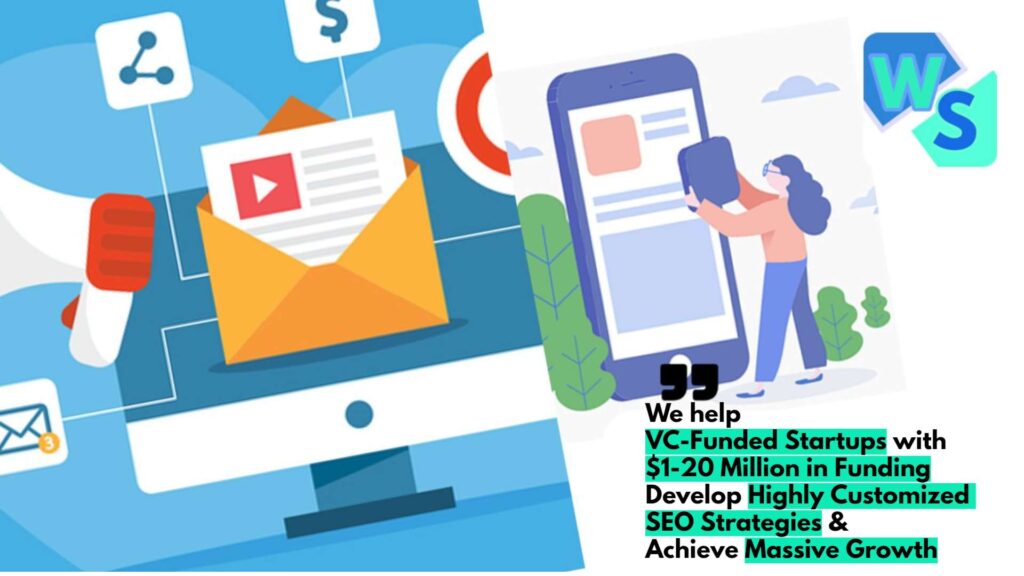Understanding Inbound Marketing
So, let’s chat about inbound marketing—a smarter way to get folks interested in what you’re selling by giving them content that’s worth their time. It’s kind of like making friends instead of just yelling your message at anyone who walks by. We’ll dive into why inbound marketing’s awesome and how it’s not like the old-school pushy marketing tactics that try to shove products down your throat.
Benefits of Inbound Marketing
When it comes to inbound marketing, there’s a bunch of stuff that makes it stand out, especially when you compare it to those old-fashioned outbound strategies. Here’s what’s cool about it:
- Easy on the Eyes (and Ears): Unlike those pesky ads you can’t skip fast enough, inbound marketing reels people in with stuff they’ll actually find useful or interesting.
- Learn-a-thon: It’s not just about selling; it’s about teaching. You get to dish out handy info tailored to where folks are in their buying journey, helping them along the way.
- Numbers You Can Trust: I love that I can track how well my inbound efforts are doing with all kinds of metrics, showing me what’s hitting the mark and what’s a swing and a miss.
- Leads That Last: Keeping your website fresh with great content means you can keep the new leads rolling in. You don’t just see a spike and a drop; it’s a marathon, not a sprint.
Plus, did you know that most folks—about 63% of them—kick off their shopping hunt online? That just underscores how inbound marketing has become a big deal today.
Inbound vs Outbound Strategies
Getting a handle on the differences between inbound and outbound strategies helps me choose the right move for my marketing game plan.
| Feature | Inbound Marketing | Outbound Marketing |
|---|---|---|
| Method | Pulls in folks with appealing content | Throws products at people randomly |
| Cost-Friendliness | Saves money over the long haul | Usually costs more for every set of eyeballs reached |
| Vibe | Low-key and actually enjoyable | Often feels like an unwanted guest |
| Lead Game | Gathers prospects slowly by keeping the conversation going | Quick hits, but they fade fast |
| Audience | Connects with people already poking around for answers | Just tosses stuff at the masses, hoping something sticks |
Inbound’s all about striking up a chat with customers who wanna hear from you while outbound relies on more insistent stuff like TV spots and spammy emails. Each has its spot in the marketing world, and mixing them up could amp your brand’s presence while nabbing quick wins when needed.
For more on how to make these strategies work for you, check out the inbound marketing examples and inbound marketing strategies for some solid ideas and tips.
Key Components of Inbound Marketing
I’m excited to share how inbound marketing ticks. It relies on a bunch of effective pieces coming together to grab attention and build connections with customers. We’ll dive into the magic mix that includes SEO and content marketing, building your brand strength, and digging into what makes customers tick.
SEO and Content Marketing
At the heart of inbound marketing lies SEO (Search Engine Optimization) and content marketing—they’re like peanut butter and jelly. SEO helps me shine a spotlight on my digital offerings by fine-tuning content so search engines like Google push it to the forefront. That means folks hunting for solutions stumble upon my brainwaves more often.
These days, a whopping 70% of marketers see more value in content marketing, betting on this horse rather than old-school ads (The Insight Studio). Pairing savvy SEO with rich content like blogs and infographics means more eyeballs and clicks, marching steadily towards conversion city.
| Aspect | Why It Rocks |
|---|---|
| SEO | Boosts visibility |
| Content | Keeps folks interested |
| Both Together | Brings in the crowd |
Building Brand Authority
Building brand authority isn’t just about being a big shot. It’s about making sure when my audience thinks of value and trust, my name pops up. Consistently rolling out valuable content—from killer blogs to handy how-to videos—I’m cementing my rep as the go-to guru.
When people start recognizing my effort as reliable, they’re more likely to stick around and chat with my brand (The Insight Studio). More trust equals more happy customers in the bag—lasting loyalty and better profit margins, you dig?
| Content Type | What It Does |
|---|---|
| Blogs | Educate and enlighten |
| Webinars | Create interaction and trust |
| Infographics | Make info easy to swallow |
Customer Insights and Optimization
One of the sweet perks of inbound marketing is the peek inside my customers’ minds. By checking out what gets their attention, I gather golden nuggets that help shape my marketing playbook.
Understanding who’s engaging with what helps me tweak my approach—customizing content and campaigns that hit home. This way, I ensure everyone walks away happy, showing this wasn’t just dumb luck but smart moves based on real data (The Insight Studio).
| Insight Type | What I Get Outta It |
|---|---|
| Customer Preferences | Custom-fit content that clicks |
| Engagement Metrics | Sharpened strategies |
By pulling together this powerhouse trio—SEO and content marketing, building brand swagger, and tuning into customer insights—I’ve got a toolkit to drive quick growth and stay a step ahead in the marketing game. For a deeper dive on employing these ninja skills, take a look at our pages on inbound marketing strategies and inbound marketing content.
Metrics for Inbound Marketing Success
Getting a handle on inbound marketing success means diving into numbers that spill the beans on how my tactics are doing. I zoom in on important figures like how far I’ve reached, organic traffic flow, click rates, conversion rates, and who’s bouncing off or sticking around. These numbers tell me what’s what with my game plan.
Tracking Total Reach
Total reach gives me a grip on how many folks I’m chatting up across all the different hangouts. I keep tabs on my peeps from Twitter to Facebook, LinkedIn, my blog, and the good ol’ email crowd. This number is gold because it shows who’s vibing with my stuff and helps me mingle with different groups (Lupo Digital).
| Platform | Followers/Subscribers |
|---|---|
| 1,500 | |
| 2,200 | |
| 800 | |
| Blog Subscribers | 1,000 |
| Email List | 3,000 |
Analyzing Organic Traffic
Organic traffic is all about the folks who swing by my site without me having to pay a dime for it. Keeping an eye on who’s visiting tells me if they’re finding my content worth their time and gives me a sense of how my strategies are doing (Lupo Digital).
| Month | Organic Traffic |
|---|---|
| January | 1,200 |
| February | 1,800 |
| March | 2,500 |
| April | 3,000 |
Click-Through Rates and Conversions
Both click-through and conversion rates weigh heavy in judging how my inbound marketing stuff is faring. High click rates show they’re interested, but if conversions are low, it’s time to switch up my moves. I put these two side by side to get the full picture on user engagement (Lupo Digital).
| Campaign | Click-Through Rate (%) | Conversions (%) |
|---|---|---|
| January Email Burst | 15 | 4 |
| February Ads Bustle | 20 | 6 |
| March Blog Buzz | 25 | 10 |
Bounce Rate and Lead Conversion
Bounce rate tells me who’s skedaddling from my site in a hurry, which might mean I need a do-over on some pages (Lupo Digital). Watching the lead conversion rate matters just as much—it’s all about visitors morphing into leads. If it’s low, Houston, we might have a problem with the message or the bait (Lupo Digital).
| Month | Bounce Rate (%) | Lead Conversion Rate (%) |
|---|---|---|
| January | 55 | 3 |
| February | 50 | 4 |
| March | 45 | 5 |
| April | 40 | 6 |
Keeping my eyes peeled on these metrics gives me the scoop on what’s rocking or flopping with my inbound strategy. It allows tweaking and improving, ensuring I’m not just hitting targets but smashing them. For a deep dive into what really works, check out our other articles chatting about inbound marketing goodness.
Implementing Inbound Strategies
So, you’re eager to master inbound marketing, huh? Spoiler alert: it’s not rocket science! Let me share how I nail it with some rock-solid strategies that make potential customers feel right at home.
Setting Up a Website Hub
Think of your website as a cozy cafe where everyone knows your name. It’s the place where all my marketing magic happens. I’ve got it stacked with blog posts, product deets, and those nifty lead capture forms that turn passing strangers into lifelong friends. Visitors need to find info quickly—like a hungry person scanning a menu.
Cracking the SEO code is high-priority ’cause you want Google to think your website’s the bee’s knees. And hey, my site’s all spruced up with a design that looks smashing on a phone, ’cause let’s face it, who isn’t glued to their screen these days?
Content Tailored to Audience
Knowing your audience is like knowing how they take their coffee, right? Content should hit them where they feel it. I whip up stuff that speaks to their likes and struggles, whether it’s articles, videos, or snazzy infographics.
Videos are like the triple-shot espresso of content—they give folks that “aha!” moment. Shocking but true: watching a product video makes 90% of people feel like experts on the subject already. And a clip on your landing page? Well, it’s like magic—it ups your conversion rate by 80%! I keep pulse-checking my content with engagement stats so I don’t miss a beat.
| Content Type | Engagement Potential |
|---|---|
| Blog Posts | Middle-of-the-road |
| Video Content | Off-the-charts |
| Infographics | Moderate to High |
Lead Generation and Nurturing
Lead generation? It’s a game of finesse. You’re wooing visitors with killer content and ace SEO. My forms? I keep them simple. Just enough to spark interest.
Knowing the difference between a Marketing Qualified Lead (MQL) and a Sales Qualified Lead (SQL) is like knowing when to pick a ripe tomato. MQLs are just window-shopping, while SQLs? They’re at the checkout, card in hand.
I play it smart with progressive profiling—instead of bombarding leads with questions up front, I sneakily gather info over time. It’s all about that personal touch.
And don’t get me started on nurturing workflows. Sending tailored content, neat offers, and keeping that conversation rolling turns casual browsers into brand buddies for life.
When I set up my site, pen audience-driven content, and ace lead nurturing, I’m cranking the inbound marketing dial to the max. For more insider tips, check out our stash on inbound marketing strategies or sneak a peek at our inbound marketing examples.
Success Stories in Inbound Marketing
Inbound marketing isn’t just a buzzword—it’s the real deal, transforming businesses left and right. Let’s jump into some juicy tales of companies that hit the jackpot by going inbound, sparking their revenue and carving out a bigger slice of the market.
Casio’s Epic Sales Jump
Here’s a story that’ll make you double-tap. Casio played it smart and hooked up with HubSpot’s Growth Stack, taking an aim at the inbound marketing game. The result? Sales opportunities skyrocketed by a jaw-dropping 496%, with calculator sales alone climbing by 26% (Cyberclick). Who knew number-crunching could be so lucrative? Casio’s shift shows how even old-school products can get a fresh shine with the right moves.
| Metric | Result |
|---|---|
| Sales Opportunities Increase | 496% |
| Revenue Increase (Calculator Products) | 26% |
Riding High with Suzuki
Things were looking down in 2016, but Suzuki South Africa flipped the script by embracing inbound marketing. And boom—a 21% sales hike and market share jumping from 1.53% to 2.17% (Cyberclick). Talk about turning lemons into lemonade. This is a lesson in how inbound know-how can help a company power through even when the economy’s throwing shade.
| Metric | Result |
|---|---|
| Sales Increase | 21% |
| Market Share Growth | 1.53% to 2.17% |
TUI Travel’s Online Explosion
TUI Travel decided to sprinkle in some social media and blogging magic to their inbound approach, and the results? Simply smashing. Monthly website visits popped by 20-50%, sales chances went up 20%, and revenue for student products surged by 106% in just a year (Cyberclick). That’s what you call a win-win-win. TUI nailed it by showing that engaging content is the kind of charm that never fails.
| Metric | Result |
|---|---|
| Monthly Website Traffic Increase | 20-50% |
| Sales Opportunities Increase | 20% |
| Revenue Increase (Student Products) | 106% |
Talent Clue and Shopify: Two Peas in the Inbound Pod
Talent Clue didn’t just dip their toes—they dived into inbound marketing with HubSpot steering the ship. The result? Leads shot up by 194% and revenue soared 291% (Cyberclick). Meanwhile, Shopify leaned on HubSpot’s tools to slick up their email game and boost their sales squad’s mojo. Talk about a one-two punch.
| Metric | Talent Clue | Shopify |
|---|---|---|
| Leads Increase | 194% | N/A |
| Revenue Increase | 291% | Improved contact management and sales effectiveness |
These stories aren’t just proof of concept—they’re proof of life. With the right inbound vibes, businesses are out there racking up success and cashing in. For the scoop on more upbeat case studies, check out our detailed book of inbound marketing examples.
Inbound Marketing Lead Generation
Lead generation is the bread and butter of what I do in inbound marketing. It’s that sweet spot when I manage to catch someone’s interest and am ready to convert them into leads for my sales team. Here, I’m digging into what makes lead generation tick—primarily the difference between folks merely giving us a nod (a.k.a. marketing qualified leads) and those who are ready to open their wallets wide (those are my sales qualified leads). Plus, I’ll share how different channels help snag those leads, the magic content brings to the table, and why buddying up with leads pays off in spades.
Marketing Qualified Leads vs Sales Qualified Leads
Grasping what separates marketing qualified leads (MQLs) from sales qualified leads (SQLs) is pretty much the secret sauce to getting lead generation right. MQLs are like the shy folks at a party—they’re interested, nodding along, but not yet asking for the dance. Think of them as downloading my eBook or signing up for a newsletter. On the flip side, SQLs are the ones confident enough to request to see the band live or maybe ask for ticket prices—they’re raising their hands high and saying, “I’m in!” By noticing actions that lean more towards payment territory, my team can jump in, ready and eager to close the deal (HubSpot).
| Lead Type | How to Spot’em | What They Do |
|---|---|---|
| MQL | Browsers | Download eBooks, sign up for newsletters |
| SQL | Buyers | Ask for demos, check prices |
Lead Generation Channels
Lead channels are like different roads leading to the same lead heaven. And each path has its quirks and perks. Based on HubSpot’s 2024 State of Marketing Report, here are the go-to avenues for scooping up B2B leads:
| Lead Channel | How Often They Deliver |
|---|---|
| Word-of-Mouth | 65% |
| Good Ol’ Email | 38% |
| SEO Wizardry | 33% |
By taking full advantage of these roads, I’m not just casting a wider net but bringing in potential customers in droves.
Content Marketing Impact
Content marketing’s my trusty sidekick when it comes to drumming up leads. Folks in marketing report that it seeds demand and rakes in the leads in its own good time (HubSpot). Be it a snazzy blog post, a slick infographic, or a must-read white paper, each piece works extra hard to spark interest and get people to cough up their details for insights worth their while.
And let’s talk about video content—it’s like the glossy magazine cover that hits the checkout line. A whopping 90% of people say videos help them decide on a buy. Toss a video on a landing page, and conversion rates can leap by 80%! Now that’s something to write home about.
Building Long-Term Relationships
It’s easy to forget in the hustle, but lead generation isn’t just a numbers game; it’s also about building connections that last. Trust and cred are like gold, and keeping in touch means not only warming MQLs into SQLs but also winning over repeat customers who bring their friends along.
Giving value is where it’s at—be it through useful stuff, well-timed catch-ups, or chats that hit home, I make sure those leads stick around for the long run. It’s all about keeping my inbound marketing strategy on point and paving the way for my business to thrive.
For a deeper dive into hustling out leads with panache, peek at my earlier chats on inbound marketing tactics and inbound marketing strategies.
Inbound Marketing Performance Metrics
When I set out to boost my inbound marketing mojo, I learned you can’t just wing it; numbers are your friends here. These digits — oh, I mean metrics — are my compass, showing what’s clicking and what’s flopping. So, let’s chew over the biggies: Return on Ad Spend, Organic Website Traffic, Time Spent on Site, and Backlink Tracking.
Return on Ad Spend
Return on Ad Spend (ROAS) makes me feel like a budget ninja. Calculate it by taking the money made from my ads and dividing it by the dough I dropped to run ’em. For any marketer splashing cash on PPC ads, be it Facebook, Google, or LinkedIn — ROAS is your cheat sheet to know if you’re splurging wisely or just throwing dollar bills into the wind.
| Advertising Platform | Ad Spend ($) | Revenue Generated ($) | ROAS |
|---|---|---|---|
| 500 | 2000 | 4.0 | |
| 300 | 1200 | 4.0 | |
| 400 | 1500 | 3.75 |
Organic Website Traffic Analysis
Checking organic traffic is like counting party guests who came just because they love my vibes, not because the invite screamed “Free Pizza!”. It’s all about seeing if my SEO mojo is pulling its weight. Analyzing these numbers helps me tweak things so that my content pops up when folks hit up Google.
| Month | Organic Traffic Visitors | Top Traffic Source |
|---|---|---|
| January | 2,500 | |
| February | 3,000 | Bing |
| March | 3,500 |
Time Spent on Site
Time on site shows if visitors are just peeking or if they’re actually unpacking their suitcases and staying awhile. A longer linger means my content’s got that sticky, binge-worthy effect. Tracking tools like Google Analytics help me follow their breadcrumb trail to see which pages get the love.
| Month | Average Time on Site (minutes) | Pages per Visit |
|---|---|---|
| January | 2.5 | 3 |
| February | 3.2 | 4 |
| March | 4.1 | 5 |
Backlink Tracking
Backlinks are like getting those cool gold stars in kindergarten. They’re badges of honor that say, “Hey, this content rocks!” Keeping an eye on backlinks shows me if I’m getting cheers from others and helps me figure out how to tweak my strategy so more folks join the cheering squad.
| Month | Backlinks Gained | Total Backlinks |
|---|---|---|
| January | 50 | 100 |
| February | 70 | 170 |
| March | 60 | 230 |
Tracking these vital metrics isn’t just about patting myself on the back when things go well. It’s about scoping out the road ahead, making sure I steer my marketing ship into calmer waters, and learning from both the triumphs and the uh-ohs. If you want to snag more pointers on tackling inbound marketing like a pro, check out inbound marketing strategies.
Striking a Balance with Inbound Marketing
Getting the hang of inbound marketing is key for keeping your business chugging along smoothly. You gotta put the right pieces together to enjoy the perks of inbound marketing while keeping things efficient and firing on all cylinders.
Sustainable Approach
The beauty of inbound marketing is that it’s all about playing the long game. Instead of smothering potential customers with loud and flashy ads, you’re creating valuable content—stuff people actually want to see. It’s like planting a tree that’ll one day bear fruit. You nurture your audience, build up some solid street cred, and in time, folks naturally gravitate towards your brand.
Cost-Effectiveness and Trust Building
One thing I love about inbound marketing? It’s easy on the wallet. You’re investing in smart content that demystifies your product or service, which leaves both you and your customers richer. You’re not throwing money at something without getting to know it first—there’s a relationship-building element to it that sticks. Trust me, gaining people’s trust is worth its weight in gold and often leads to some lifelong bonds. Toss in glowing reviews, and you’re on your way to pulling folks in without needing to shake the money tree (Analytico Digital).
Continuous Maintenance and Effort Required
Sure, inbound marketing is a game-changer, but it ain’t all sunshine and rainbows. You’ve gotta put in the hours. It’s about keeping things fresh—tweaking your content, trying out new tactics, and peeping at what the data’s telling you. You’ve got to dive into what your audience is vibing with and keep that train running. But hang in there! The big payoff comes overtime for those who keep hustling (Adobe Business).
Comparing Outbound and Inbound Marketing
To find the sweet spot between inbound and outbound strategies, you gotta know your stuff. Outbound marketing gets props for its punchy results and putting brands in the spotlight. It’s about casting a wide net, sometimes catching those who weren’t even looking your way (Adobe Business).
On the flip side, inbound marketing reels them in with valuable insights and builds relationships over time. Weighing these options helps you figure out where to toss your resources to nail your marketing aspirations. If you’re itching for more on this, check out our guide inbound marketing vs outbound marketing.
By blending these methods, you’re covering your bases and equipping your business for those long-haul wins.



















